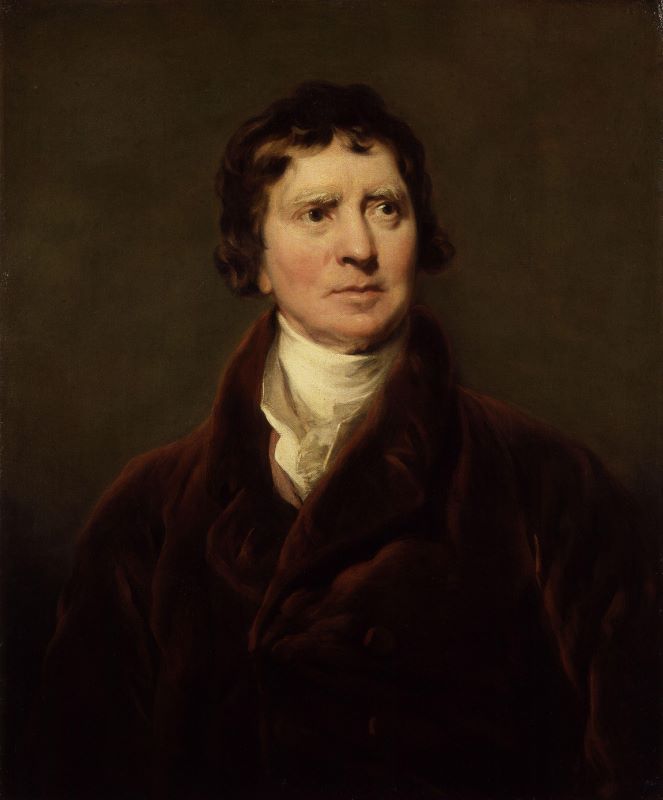The Township of North Dundas in the County of Dundas. Dundas Street in Toronto, with Yonge-Dundas Square at its heart. Why all this Dundas? They are all named after Henry Dundas, and they’re not the only memorials to this very fascinating character. In Edinburgh, his home town in Scotland, there is a 150-foot high monument in St. Andrew Square. There is a Dundas Street in Hong Kong, and a shire in Australia carrying his name. There are islands named Dundas in Nunavut, British Columbia, and New Zealand. So, who was this man with such a far-reaching legacy?
Henry Dundas was born in 1742 and had a long and very successful career in law and politics in both Scotland and England. His reputation is closely linked with the issue of slavery, both for good and bad. As a lawyer in Scotland in 1776, he represented a man named Joseph Knight, who had been bought as a slave in Jamaica before being brought to Scotland. He launched a legal appeal to gain his freedom, and Dundas argued before the highest court in the land that:
“Human nature, my Lords, spurns at the thought of slavery among any part of our species.” He won the case, Knight won his freedom, and slavery became illegal in Scotland ever after.
When William Wilberforce campaigned to end slavery in the British Empire, Dundas supported his cause in Parliament, but differed with the abolitionists by arguing that abolition had to be gradual, or other countries and parties would take over the trade, or drive it underground. His approach was successful, and slavery and the slave trade were not abolished in the Empire until The Slave Trade Act was enacted in 1807. It was another 26 years before ownership of slaves became illegal in most of the British Empire with the passage of the Slavery Abolition Act 1n 1833.
This has led to great controversy over Henry’s record on slavery with the rise of the Black Lives Matter movement in recent years, as there is a belief that Dundas delayed abolition and should be treated the same as actual slave owners of his day. Attempts have been made in Toronto to have Dundas Street and Yonge-Dundas Square renamed, and the same campaign has been launched in Edinburgh to have his statue removed from the top of the monument in St. Andrew Square. A descendant of Henry has asked that a plaque be added to the monument explaining the truth of Henry’s attitude towards slavery. Sometimes, it seems, the details and complexities of history are overlooked in pursuit of passionate causes.
Slavery was not the only social cause promoted by Henry Dundas. He worked for Catholic Emancipation in Scotland in 1778. Catholics were restricted by several pieces of legislation which required them to take an oath rejecting the political power of the papacy, deny certain Catholic doctrines, if they wished to own property worth above a set amount, or to attend a university, and many other areas of life. Dundas tried to introduce a Bill in Scotland to end this discrimination, but the reaction was violent and sustained, and the Bill had to be withdrawn. Catholic Emancipation would take many more years to achieve.
Dundas, in spite of this failure, was a very powerful figure in British politics in the last decades of the 18th Century. Indeed, so powerful was he in Scotland, that he was known by such nicknames as “King Harry the Ninth”, the “Great Tyrant” and “The Uncrowned King of Scotland”.
He served in several posts under Prime Minister William Pitt, including secretary of state for the Home Office (1791-1794), president of the Board of Control for Indian Affairs (1793-1801), secretary at war (1794-1801), and first lord of the admiralty (1804-1805).
In 1802, Dundas became Viscount Melville and Baron Dunira, of Dunira in Perthshire. Two years later, when he returned to Cabinet as First Lord of the Admiralty, he was the subject of a Commission of Inquiry looking into financial mismanagement of his Department. Although there had been some unauthorized activities by a subordinate of his, Henry was acquitted of wrongdoing, but the process seems to have soured him on public life and this was the last post he held in government. He died on May 28,1811, in Edinburgh, aged 69.
Henry was a close friend of John Graves Simcoe, the first Lieutenant-Governor of Upper Canada. When Simcoe reorganized the province in July, 1792, he named one of the new counties after his friend, Henry Dundas. At the time, the county stretched from the St. Lawrence to the Ottawa River. Its boundaries were revised in 1800.
North Dundas, then, carries the name of an influential and powerful figure in the history of the British Empire at the end of the Eighteenth Century, a man who was controversial in his day, and seems to have managed to remain current and controversial down even to our own time.


[…] Why Dundas? […]